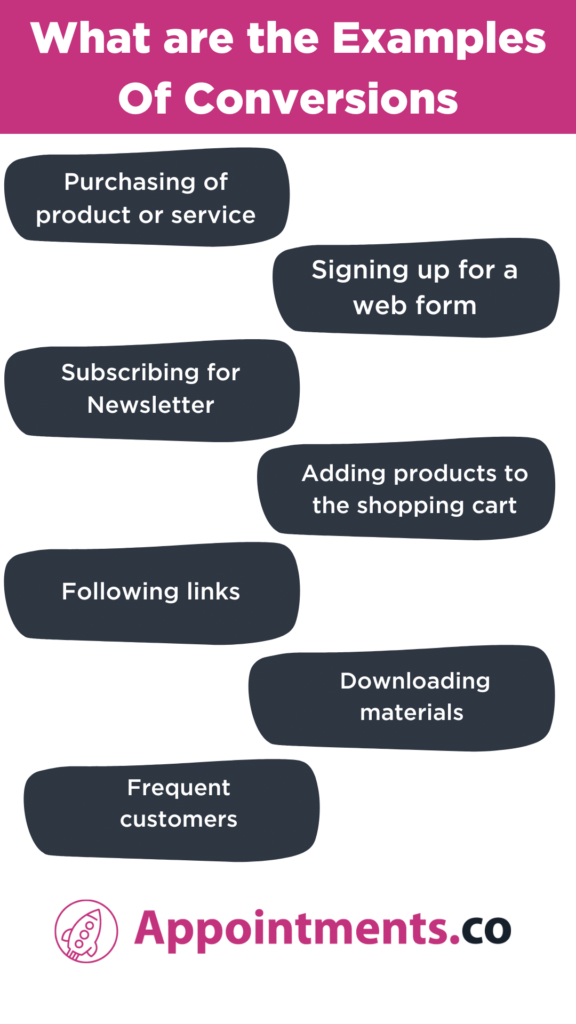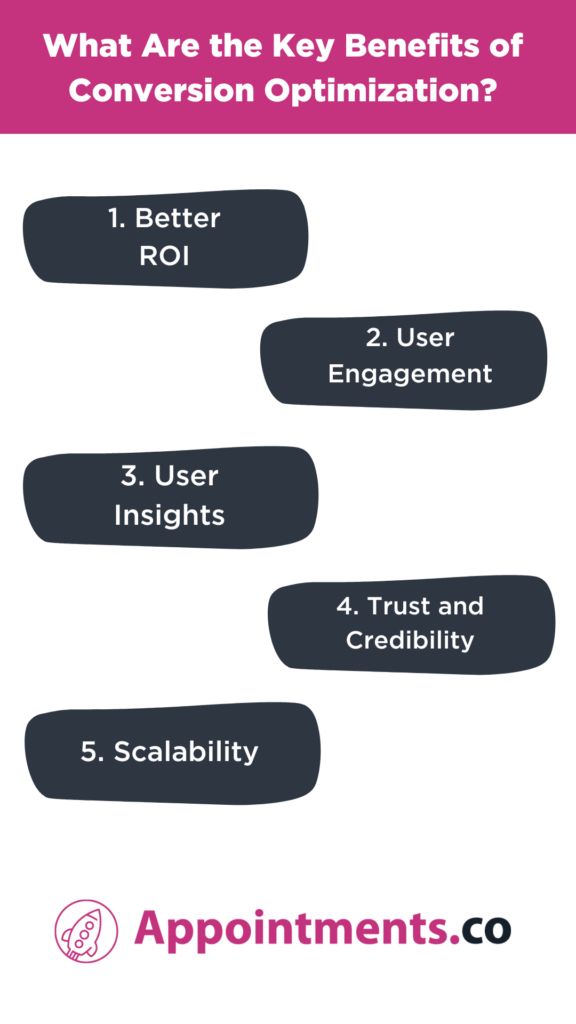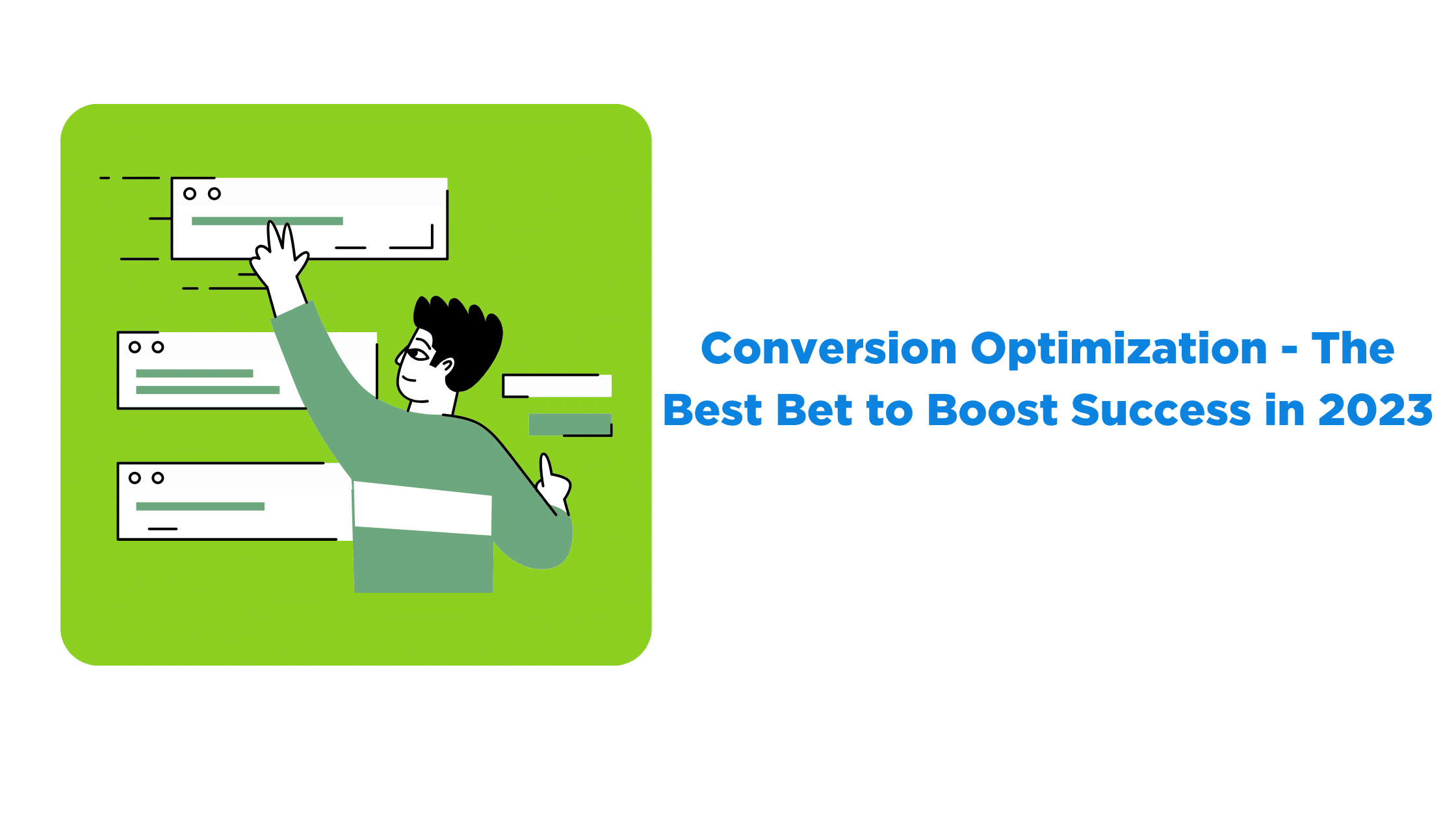Most marketing teams focus on driving traffic to their websites, so the traffic can be converted into qualified leads for sales. But that is just half the struggle. An increase in the existing website traffic and leads help businesses move forward toward sustainable and long-term growth. So, this is where conversion optimization comes into play.
In this article, let’s see what conversion optimization is, how to calculate it, and what the average conversion rate is.
Table of Contents:
- What Is Conversion Optimization?
- Examples of Conversions
- What Are the Key Benefits of Conversion Optimization?
- How to Calculate Conversion Rate for Conversion Optimization
- What Is the Average Conversion Rate and Why Is It Essential for Conversion Optimization?
What Is Conversion Rate Optimization?
Conversion Rate Optimization (CRO) is all about improving your website’s conversion rate, or landing pages, to increase the chances of visitors taking the actions they desire. Online traffic these days is unpredictable. It is difficult to catch your target audience’s attention right away and they’re unlikely to come back later. That’s a missed opportunity for your business. So, this is where effective conversion optimization comes in.
Doing the conversion rate optimization process in the right way not only saves you time, money, and effort but also opens doors to new growth strategies in the conversion funnel you might not have known before.
It helps you understand how people use your website or landing page, gives you insight into customer behavior, and provides tips on how to improve the user experience of your website to reach your goals.
But the important thing is that conversion optimization is an ongoing process. It’s not something you do once and forget about it. It’s about constantly learning, testing, and optimizing your conversions.
Examples Of Conversions

Some of the most common actions of the site visitors that are considered conversions are:
- Purchasing of product or service
- Signing up for a web form
- Signing up for a Newsletter subscription
- Adding products to the shopping cart
- Following links
- Downloading materials from the website
- Converting from rare customers into frequent customers
In simple terms, a conversion can be any desired action site visitors take that lets you collect their information, sell to them, or just observe the interaction they have with your campaigns.
What Are the Key Benefits of Conversion Optimization?

Some of the key benefits of conversion optimization are as follows:
1. Better ROI
Conversion optimization helps you get more value from your marketing efforts. It helps to increase conversion rates, which means you can attract more customers without spending an excessive amount of time generating more website traffic or increasing your marketing budget.
The CRO process is all about optimizing your website to make the most of every visitor and turn them into valuable and paying customers. Conversion optimization allows you to work smarter and maximize the results from your existing resources.
2. User Engagement
Conversion rate optimization focuses on improving the way visitors interact with your website or landing page, which leads to seeing how users interact and generate more conversions. When you focus on optimizing conversion rates, you’re not only aiming for increased conversions but also gaining valuable insight into your website’s functionality and your campaigns’ performance.
You can understand what elements of your campaigns attract users to take action by using Google Analytics or heat maps to measure conversion rates and make improvements accordingly. It’s all about creating a user experience that resonates with your target audiences and increases the chance of conversion.
3. User Insights
Conversion optimization involves gaining a deeper understanding of your audience, which, in turn, enhances your marketing efforts. By knowing your target audience profile better, you can effectively target the right customers with the right content at the right time.
It’s all about increasing the chances of your success by being well-prepared and delivering according to your customer’s needs and intentions. Conversion optimization empowers you to refine your digital marketing strategy and create content that resonates with your audience, ultimately driving better results for your business.
4. Trust and Credibility
To access some of your content, like ebooks or information about your services, users often will be asked to provide their contact information like their email address, name, or phone number in return. But, before that, they must feel comfortable sharing their details and trust your website. This is where conversion optimization comes in.
It helps you build trust and creates a positive impression on potential customers. By optimizing your website or e-commerce site, you can gain the confidence of your visitors, making them more likely to engage with your business and willingly provide their information. Ultimately, conversion rate optimization plays a vital role in establishing trust and credibility, paving the way for successful conversions.
5. Scalability
Every market, irrespective of size, has a limited number of potential leads, especially if you’re targeting a particular niche. Tracking conversion optimization enables you to get the most out of your existing audience or website traffic to attract new customers. By improving your conversion rate, you can grow your business without worrying about running out of potential customers.
How to Calculate Conversion Rate for Conversion Optimization
Now that you know what conversion optimization is let’s see how you can easily calculate your conversion rate. You don’t need to do critical math here, since it is a straightforward and easy formula.
You can simply calculate the conversation rate by dividing the number of conversions by the total number of visitors to your website, multiplying the result by 100, and with the percentage you get you can get an idea of your website’s performance.
You can use your conversation rate as a benchmark to compare if you make any changes. This way, you can see how much of an effect your conversion optimization has on your current conversions, and if your efforts are really worth it. It is really an effective tool to help you understand what changes your website needs and what improvements can be made with conversion optimization.
What Is the Average Conversion Rate and Why Is It Essential for Conversion Optimization?
The average conversion rate can be anywhere between 1% to 4%, but this is not certain due to reasons like:
- The conversion rate can differ depending on the goal of conversion.
- The conversion rate can vary according to different websites, pages, and target audiences.
- Most businesses won’t share their conversion rate data publicly.
The average conversion rate can be really helpful in serving as a standard rate for enhancing conversion optimization, but you should note that there are no actual or accurate average conversion rates in the industry that you can wholly trust and depend on to compare yourself against it.
It could be a better conversion optimization strategy to obsess over a particular average conversation rate percentage and make conversions as much as possible resonate with that. Instead, you can focus on having an in-depth understanding of your customers and making the necessary developments to give your potential leads the best user experience.
Frequently Asked Questions
1. What is the role of conversion rate optimization?
Conversion rate optimization is important because it helps you to cut off customer acquisition costs by gaining more value from existing website visitors and customers. Through conversion optimization efforts you can increase your revenue per website visitor, acquire more customers, and grow your business.
2. Who needs conversion rate optimization?
Any online business, regardless of the size, or if they are well established needs conversion rate optimization. If you want to convert your website visitors into qualified leads and loyal customers, you need conversion optimization to do it in the most reliable, impactful, and effective way.
3. What is a conversion optimization strategy?
Conversion rate optimization strategies include generating ideas for improving the elements of your website, and then validating those hypotheses through multivariate or A/B testing.
Related Reads
- 5 Best Tips to Boost Conversions for Your Ecommerce Sales Funnel
- Best 5 B2B Prospecting Tools to Drive Your Conversion Rate
- Sales Email – 7 Best Ways to Improve Your Conversion Rate
The Bottom Line
You can come to the conclusion that conversion optimization depends on how well you understand your customer’s needs, track their behavior, how well they interact with your website, and compare that information to your conversion rate optimization over time.
While there are many tools that are available for you to measure your web traffic, customer engagement, and conversion goal completion, they cannot give you accurate insight into the performance of your website like conversion optimization can.
So, when it comes to conversion optimization, do what works for your website and target audience, and give the users the best experience.
Illustrations – StorySet



